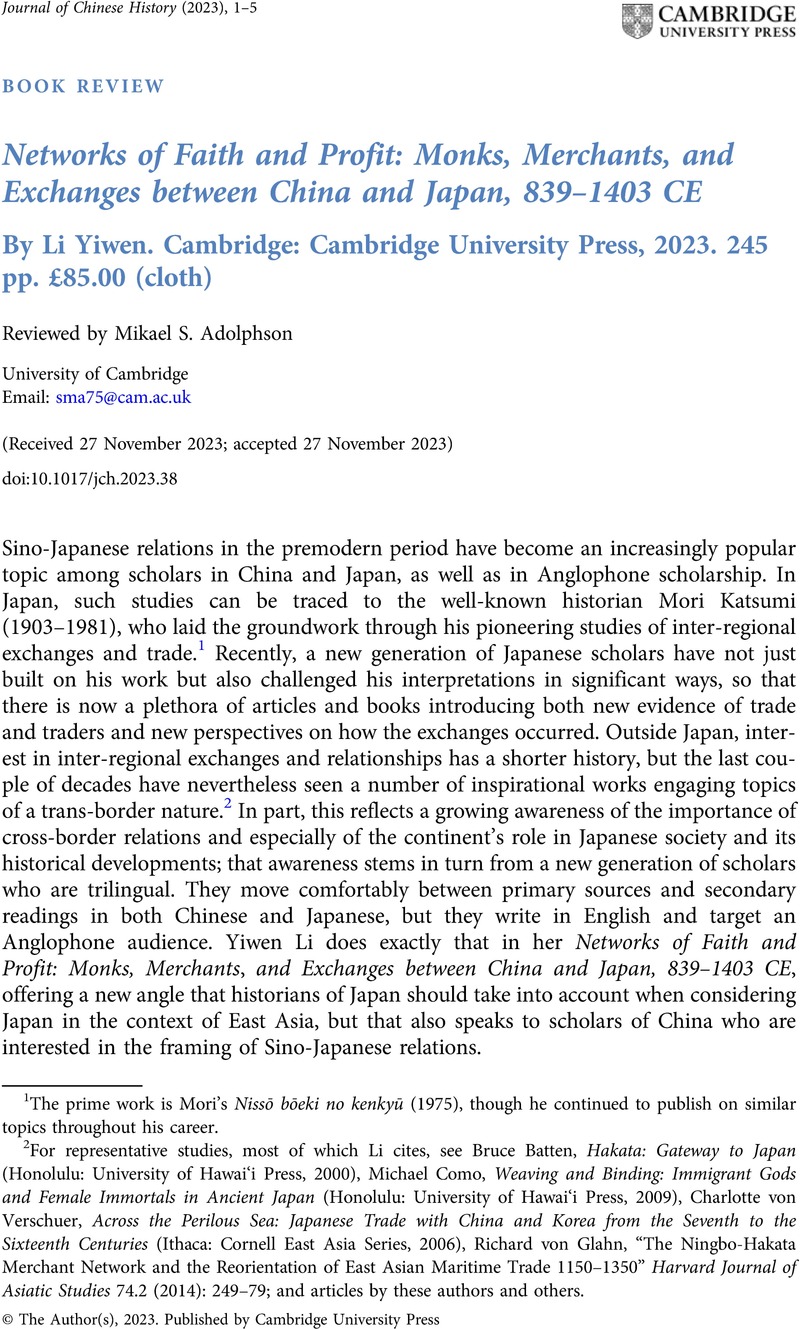No CrossRef data available.
Published online by Cambridge University Press: 21 December 2023

1 The prime work is Mori's Nissō bōeki no kenkyū (1975), though he continued to publish on similar topics throughout his career.
2 For representative studies, most of which Li cites, see Batten, Bruce, Hakata: Gateway to Japan (Honolulu: University of Hawai‘i Press, 2000)Google Scholar, Como, Michael, Weaving and Binding: Immigrant Gods and Female Immortals in Ancient Japan (Honolulu: University of Hawai‘i Press, 2009)CrossRefGoogle Scholar, Verschuer, Charlotte von, Across the Perilous Sea: Japanese Trade with China and Korea from the Seventh to the Sixteenth Centuries (Ithaca: Cornell East Asia Series, 2006)Google Scholar, Glahn, Richard von, “The Ningbo-Hakata Merchant Network and the Reorientation of East Asian Maritime Trade 1150–1350” Harvard Journal of Asiatic Studies 74.2 (2014): 249–79Google Scholar; and articles by these authors and others.
3 Robert Borgen also made this argument in “Jōjin's Travels from Center to Center (with Some Periphery in Between)” in Heian Japan, Centers and Peripheries, eds. Mikael Adolphson, Edward Kamens, and Stacie Matsumoto (Honolulu: University of Hawai‘i Press, 2007), 384–413.
4 Li's footnote indicates that she has misread Hashimoto's summary and criticism of previous scholarship as representing his own views. See Hashimoto Chūka gensō: Karamono to gaikō no Muromachi jida shi (Tokyo: Bensei, 2011), 6. For Hashimoto's argument, see Chūka gensō, 106–107 and Sanehiro, Ishida and Yū, Hashimoto, “Mibu-ke kyūzōbon Sōchō sōbō henchō ki no kisoteki kōsatsu—Ashikaga Yoshimitsu no juhō girei wo megutte,” Komonjo kenkyū 69 (2010): 14–34Google Scholar.
5 See Hengwu, Liu, “Godai goetsukoku no tainichi ‘shokan taikō’ kō,” Kodai bunka 59:4 (2008): 58–69Google Scholar and his Ningbo gudai duiwai wenhua jiaoliu: yi lishi wenhua yicun wen zhongxin (Beijing: Haiyang Chubanshe, 2009).